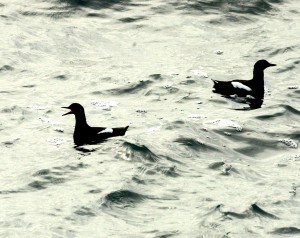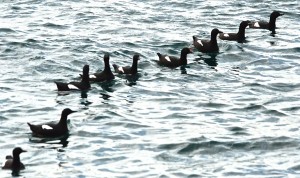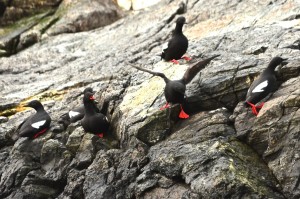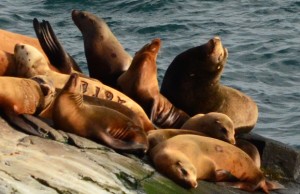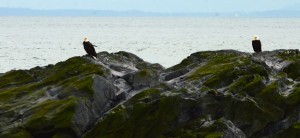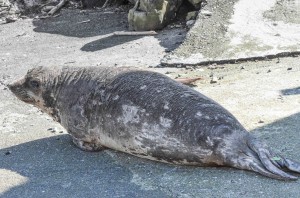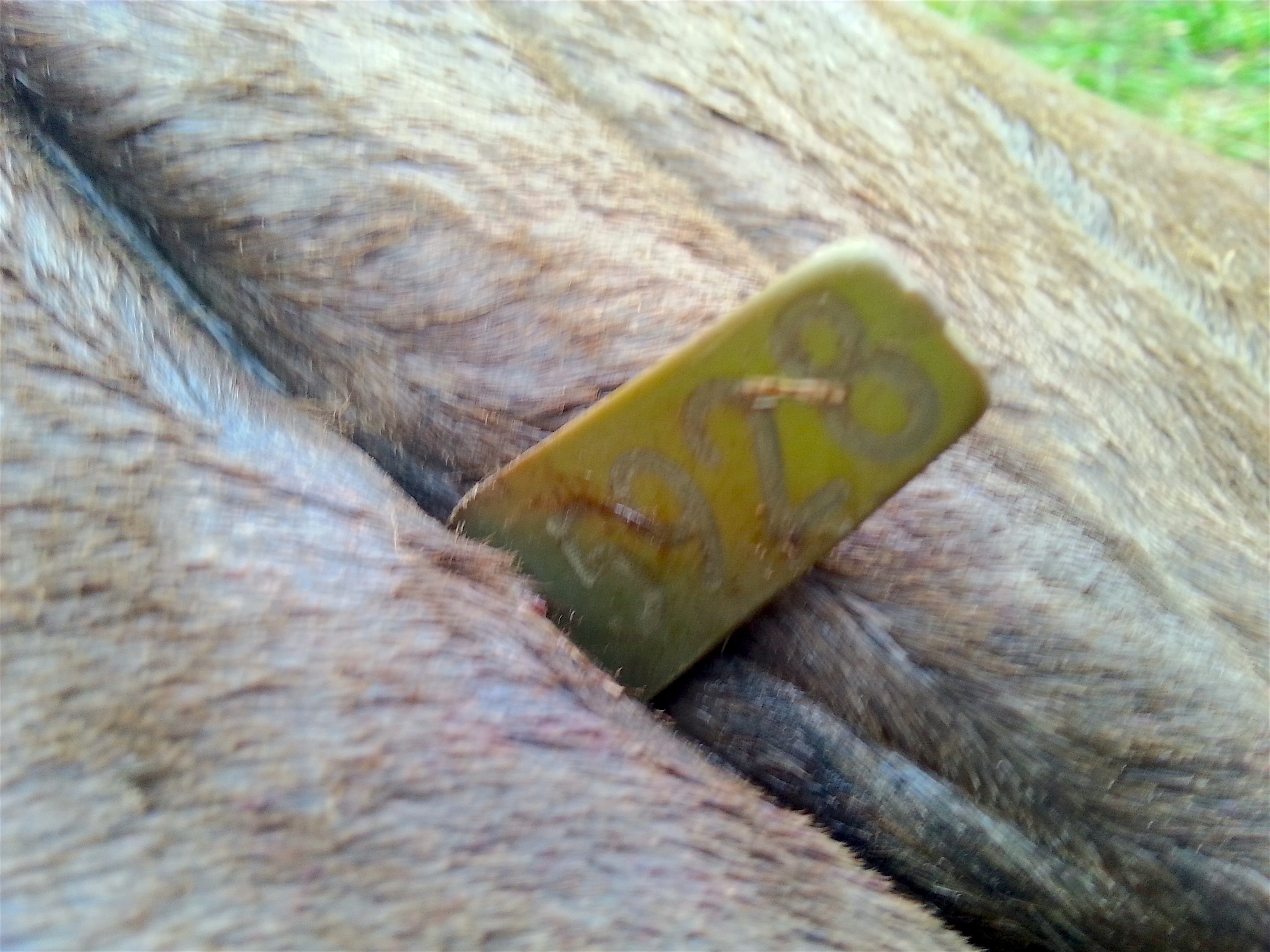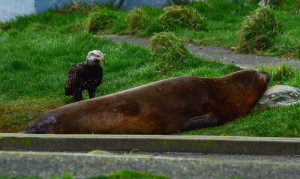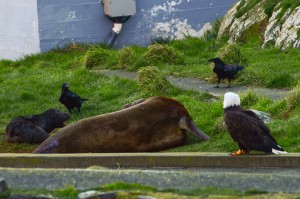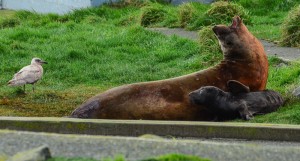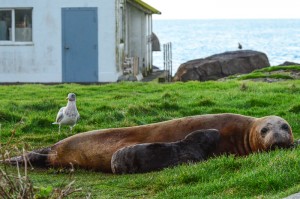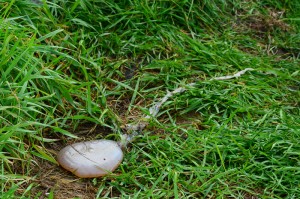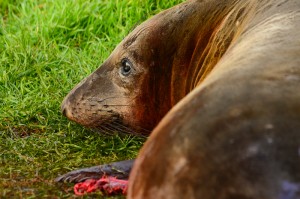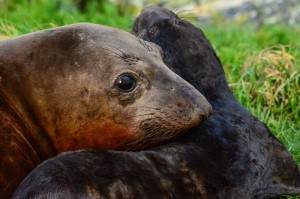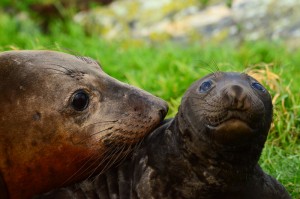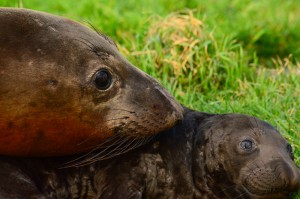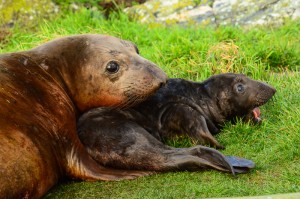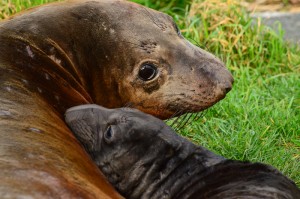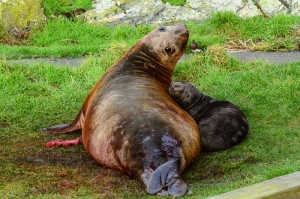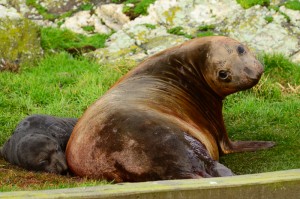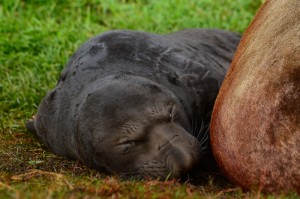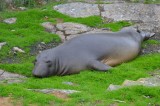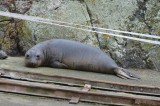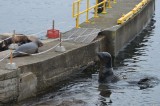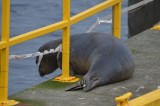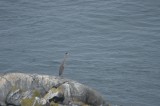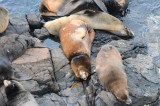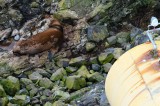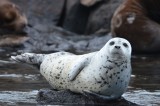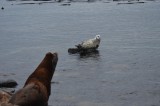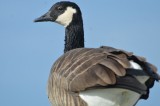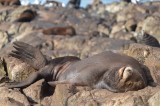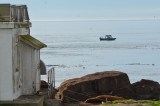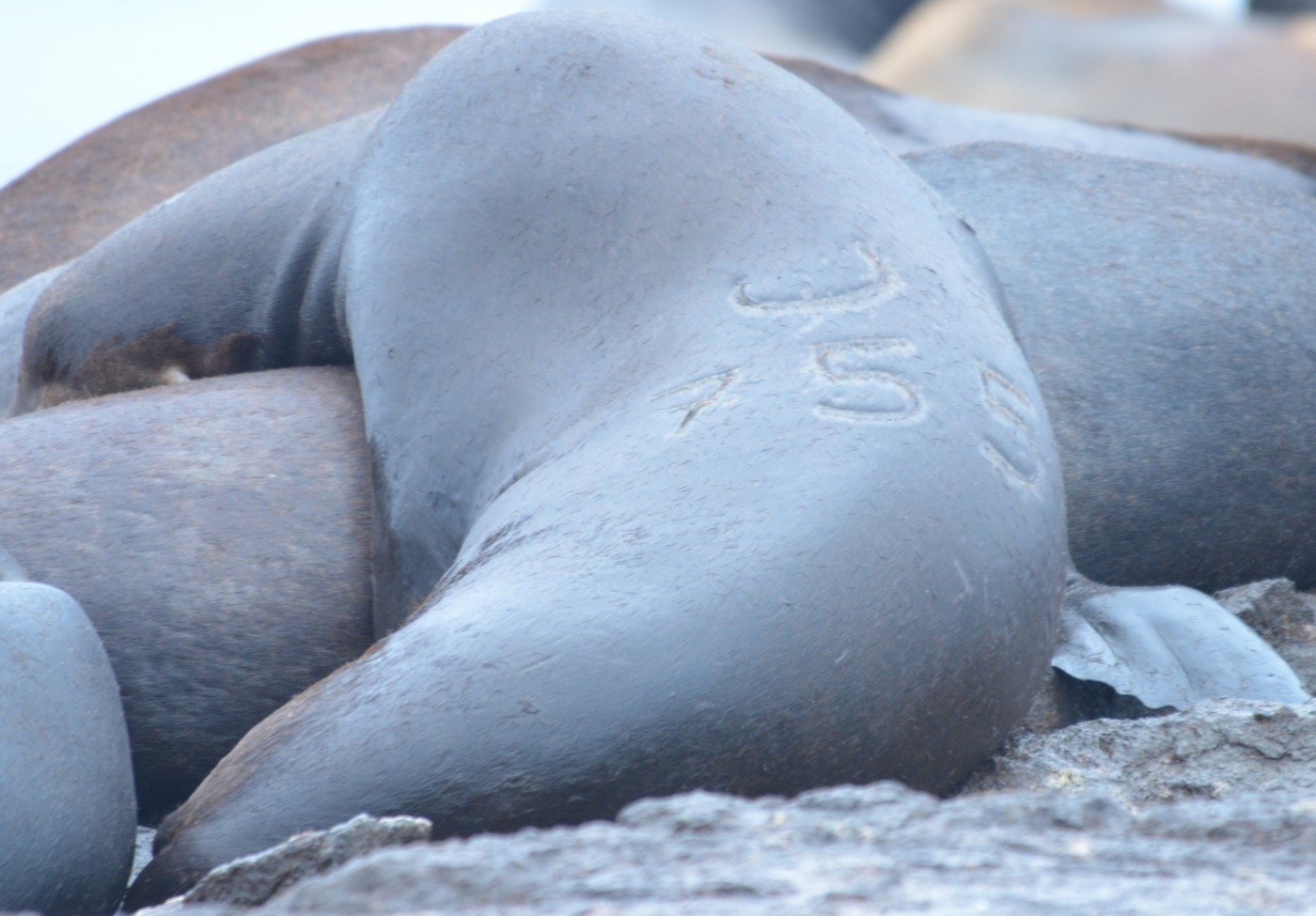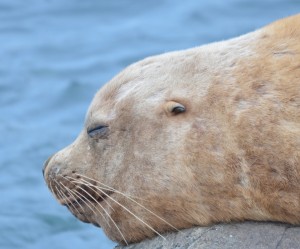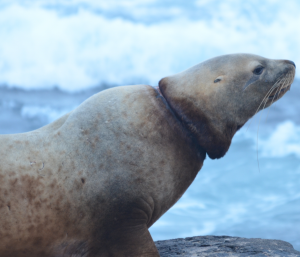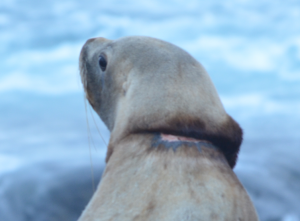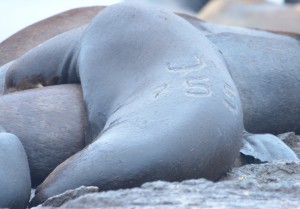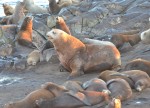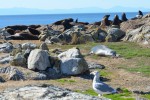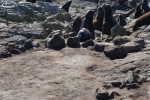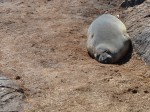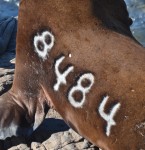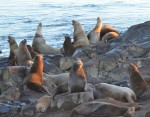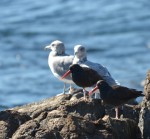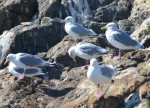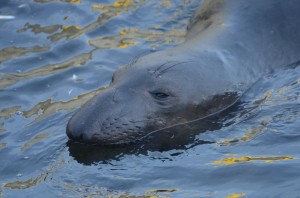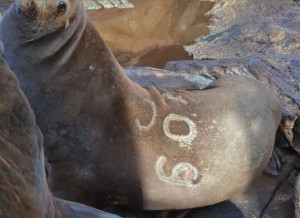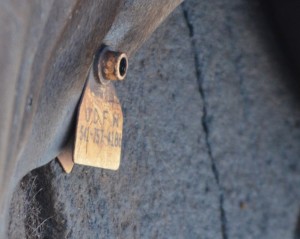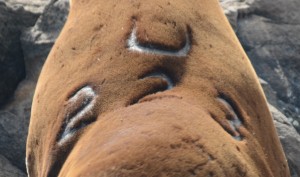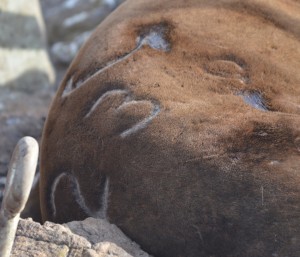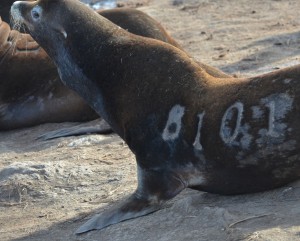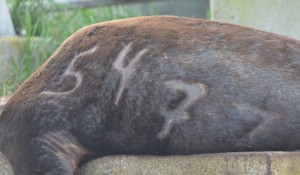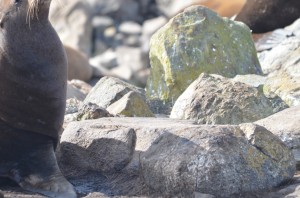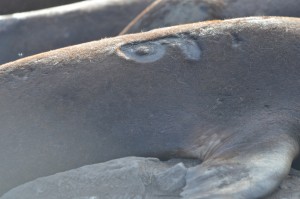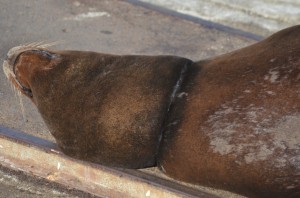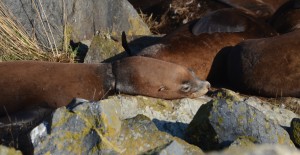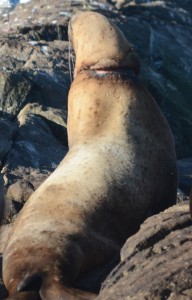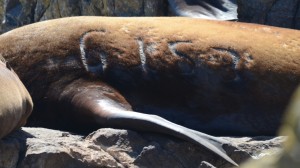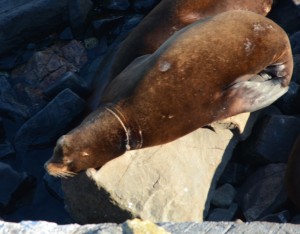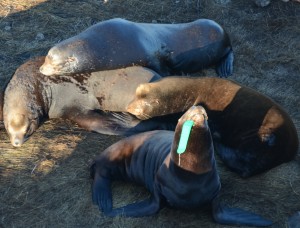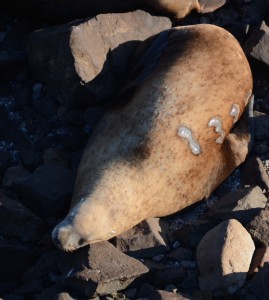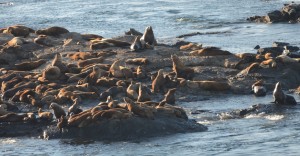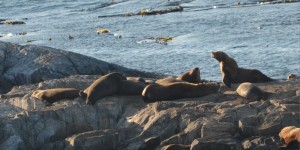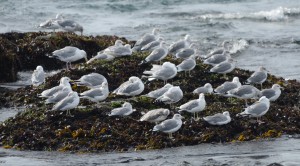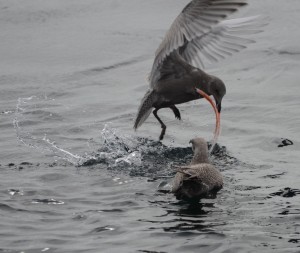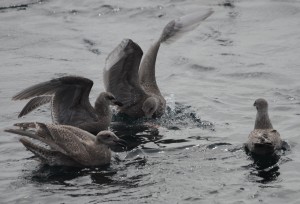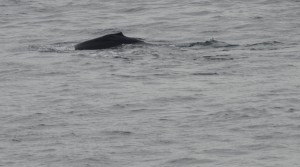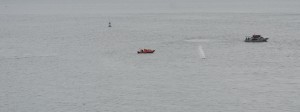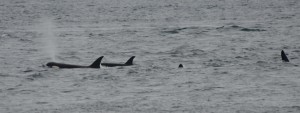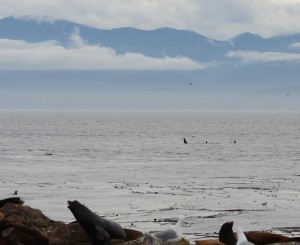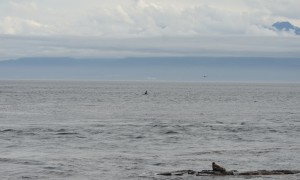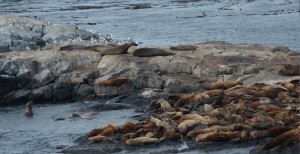There was nothing remarkable about the leaden morning with light and languid, north-northeast winds. Partially overcast skies cast a silvery pall over the Strait but bits of blue sky held promise for better things to come. The barometer held overnight at just above 1010 hPA and by mid-afternoon had dropped to 1008 As evening falls the barometer is holding at 1007. In the afternoon there was some sunshine but it was really a day dominated by cloud.
Five commercial whale-watching vessels were observed working in the Ecological Reserve today. Three were seen working in behind (south side) South Rocks and they were travelling very slowly and cautiously. Sea conditions were calm. The sea lions did not appear too disturbed by their presence. A few younger animals close to the water went in but it would be difficult to determine cause. On that note, military blasting continued as planned, from late morning to mid afternoon. Interceptor vessels and red flags warned boaters off. The sea lions and birds did not seem to react.
The wild goose chase continued and progress is happening. By early afternoon, most of the geese had retreated to the military zone to graze on the large lawn there. One pair staking out an area by camera 5 were more persistent, but eventually left for greener pastures. A couple of pairs of gulls were seen doing some of the broody things they do when nest building but as it is early yet, they are probably just practicing for the big day when they actually start to build a nest. The Pigeon Guillemots continue to flock here in the morning and leave in the afternoon as noted by Riley. Many were practicing walking on land today and in the water they worked the ebb flow through the rocks taking a ride and then flyew back upstream for another one.
A partially decomposed Northern Elephant Seal pup and part of its skull was located not far from the octopus in the boulders beach east of the Ecoguardian’s house. From the size, it appeared to have been a very young pup, if not premature, at death. The octopus was bigger. The plentiful, rich food sources are starting to explain the large number of eagles here daily.
A branded Stellers Sea Lions was photographed today 319Y and 4332 was observed. A California Sea Lion with a number on its rump and an X anterior to that was observed but the number was not verified nor was a successful photo taken.
- Pigeon Guillemots are starting to pair and come ashore.
- Safety in numbers as this string approaches shore.
- It is tricky for a sailor to walk on land after being at sea all winter.
- Stellers Sea Lion # 319Y can be seen here.
- At least two adult Bald Eagles and up to a dozen juveniles are here daily.
There were no visitors and chores were routine today.

